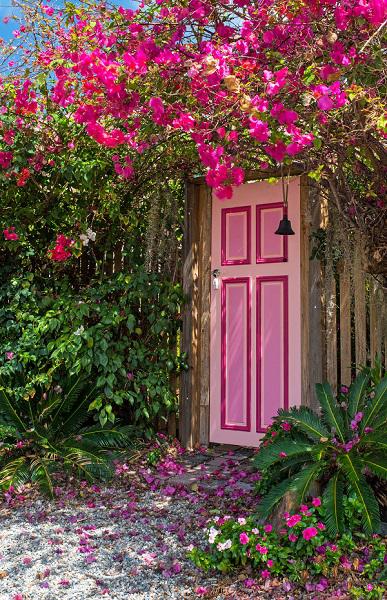Latin name: BugainvilleaFamily: Nyctaginaceae
In which Greek neighborhood, in which Greek islands and countryside, and if we have not met Boukambilia! On the hard stems grow thorns and sparse foliage, but the hallmark of summer is its flowering. It is a purely outdoor plant, which is propagated by stem cuttings in the spring. Cut off 7.5 cm sections, which are then planted and placed at a constant temperature of 21 degrees Celsius.
Light – Position – Temperature
Bougainvilleas love plenty of light and sunlight. The plants do not flower at all in shade. They are plants that like moderate temperatures, such as 13 degrees Celsius in the growing season, and 10 degrees in winter when growth stops.
Watering – Fertilization
The soil during its growth must always remain moist, so it requires frequent but never excessive watering. If we have planted our Bougainvillea in a pot, the remaining water in the saucer must always be drained. In winter, watering should be very sparse if you have your plant in a glaze, and up to zero if it is directly in soil.
Tip: Always prune in autumn. If we turn the branches in a circle and tie the ends to the trunk, the plant will bloom better!
As far as fertilisation is concerned, we add Potassium in liquid fertiliser every time we water in order to help the plant grow during the spring period. In winter fertilisation is not necessary.
Enemies and Diseases
There are two enemies of Bougainvillea, aphids and pseudococcus, although it is a relatively hardy plant.
α) AphidsIt isvery easy to see them with the naked eye. They are found at the top of the plant, on the young tops. Aphids suck out the sap, causing yellowing and leaf drop. Mould can easily grow on the sticky substances secreted by aphids, which are carriers of many viruses. They are controlled with malathion or diazinon by spraying the leaves.
b) PseudococcusIt israre for a plant in our house to be infected by pseudococcus, while it often occurs in greenhouses. However, it may be that another of our plants has been affected by it and we have to deal with it. The adult insects are white and look like lice, while the young insects are covered with a waxy covering and are found on the branches. The positive thing about this plant is its sparse foliage, which allows us to see the false bark beetle very easily, but it is difficult to deal with because it spends a large part of its life protected under the bark or crinkle.

